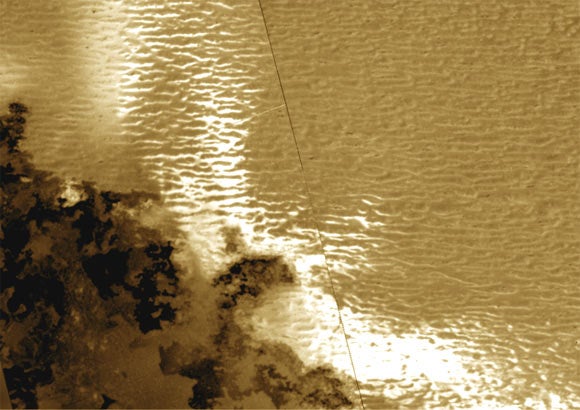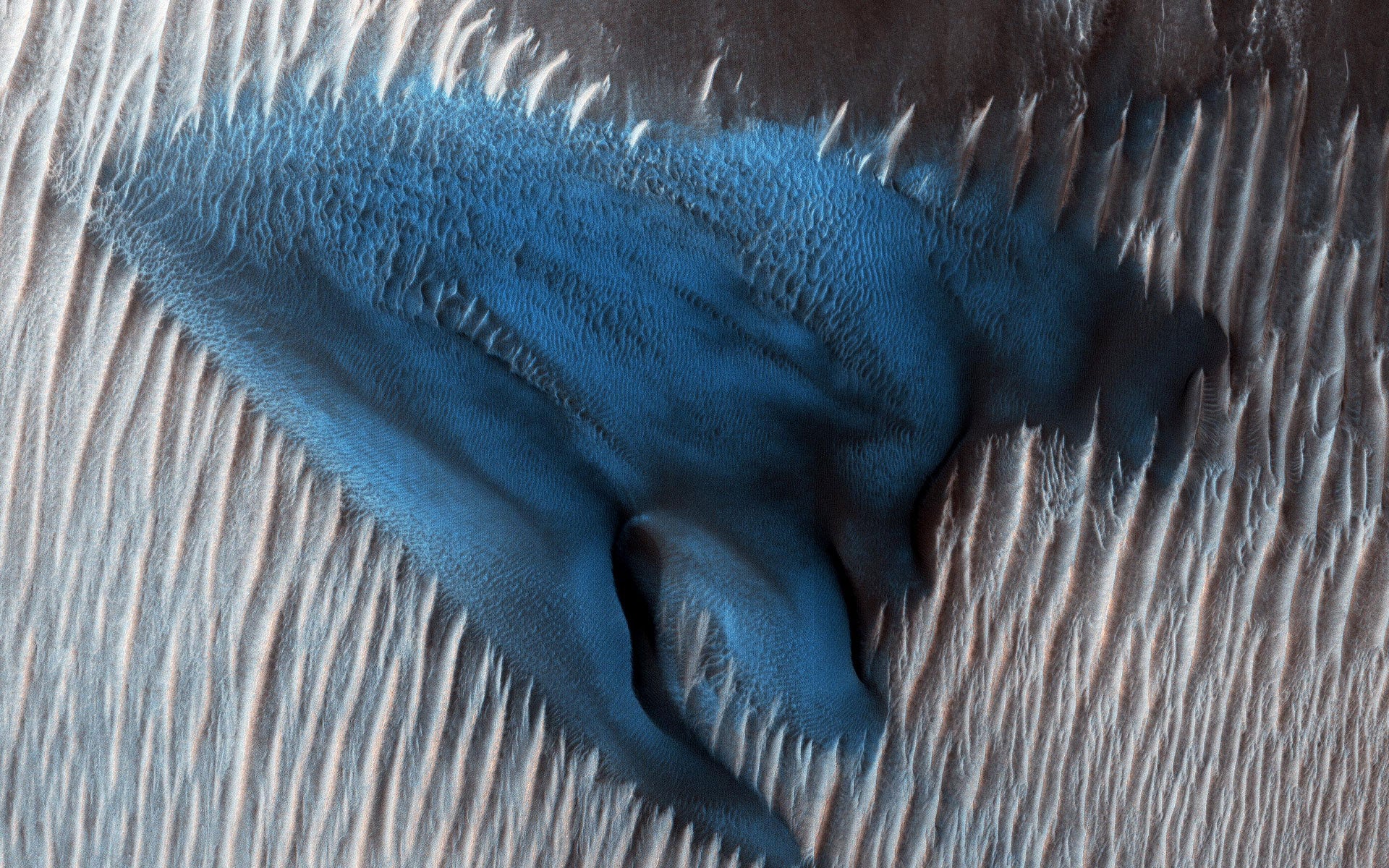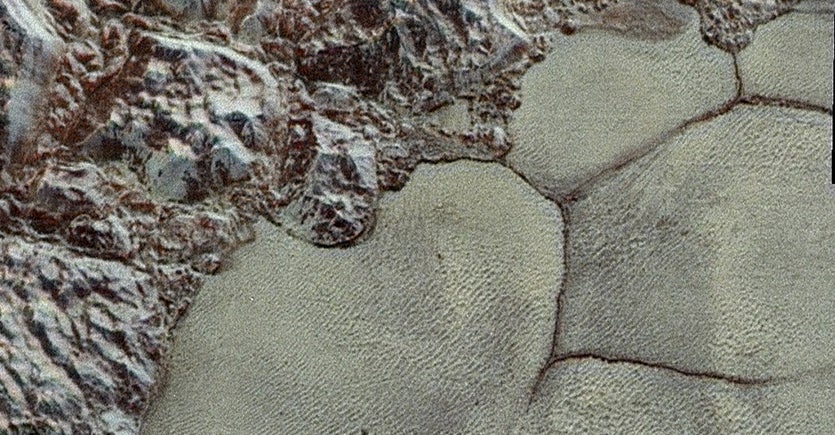The process of windblown sand doesn’t just call Earth home, but other planets throughout our solar system – building dunes, emitting dust and providing clues to the history of our solar system.
Jupiter’s moon Io has long been famous for its sky-splitting volcanic eruptions, powered by Jupiter’s tidal gravity. But strange ridge-like features in regions adjacent to the volcanoes have raised questions since their discovery. A recent study has argued that, even under Io’s whisper-thin atmosphere, these ridges are probably vast dune fields. This new discovery adds yet another world to our growing trove of worlds where aeolian processes operate.

Mars also features a wide array of aeolian features. The natures, locations, and compositions on aeolian features helps scientists piece together the story of Mars’ recent climate. For example, dunes in Gale Crater, the site of the Curiosity rover’s exploration, suggest that, although the region near Gale might have been wet at times in the past, the region must also have been quite arid since dunes generally form in arid environments.
Martian dunes are the result of a paradox. In every unique environment, there is a minimum wind speed necessary to move sand particles. From what we have seen of Martian wind, that minimum wind speed is never met, yet sand particles are definitely moving.

Farther afield, Pluto also seems to have dune fields. During its flyby of the Pluto system, the New Horizons mission imaged vast swaths of Pluto’s surface and found regularly spaced ridges sprawled across flat plains. Unlike terrestrial or Martian dunes, though, Pluto’s dunes are probably made of methane ices. Since Pluto’s atmosphere waxes and wanes as Pluto’s orbit takes it closer to and farther away from the Sun, it’s likely these dunes formed long ago. And so, like the Martian dunes, we can probably use them to understand Pluto’s ancient climate.

Dunes on other planets bring up a plethora of questions: Can we predict how a dune will form? What can we learn about a planet from its dunes? Is the equipment we currently use sufficient for scientific needs? What kind of equipment do we need to study dunes in the future?
Find out the answers to these questions and more in Dr. Christy Swann’s May First Friday Astronomy lecture linked below!
Boise State First Friday Astronomy – Dr. Christy Swann – May 2022